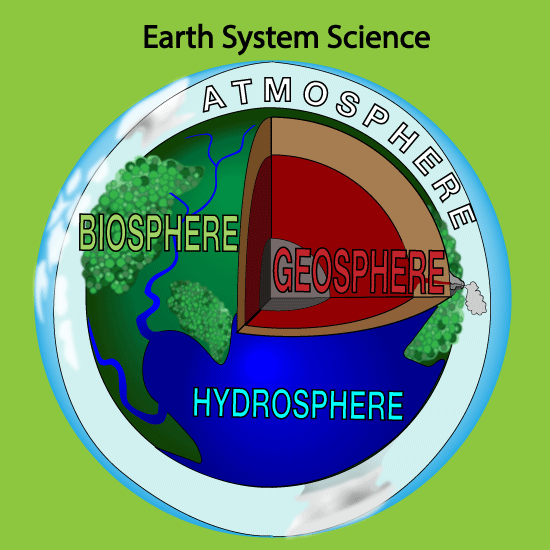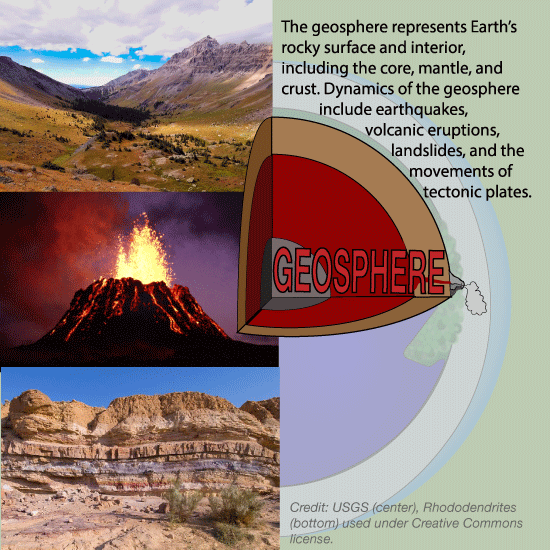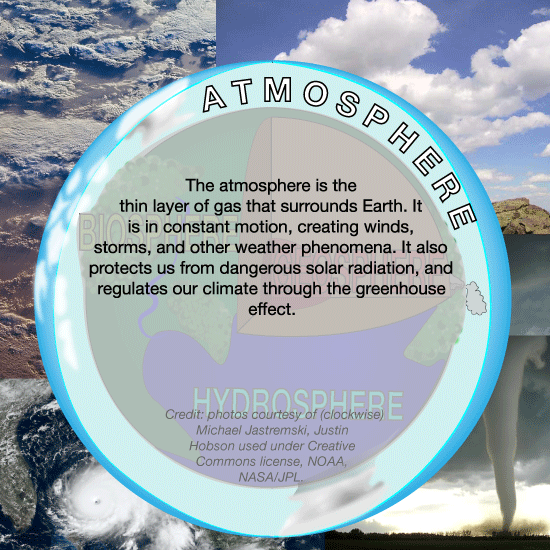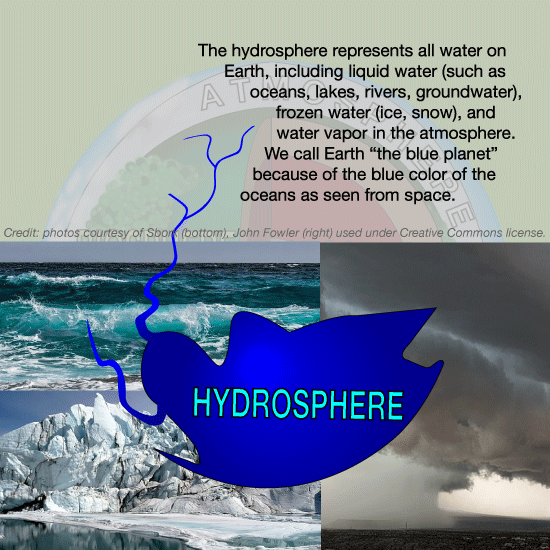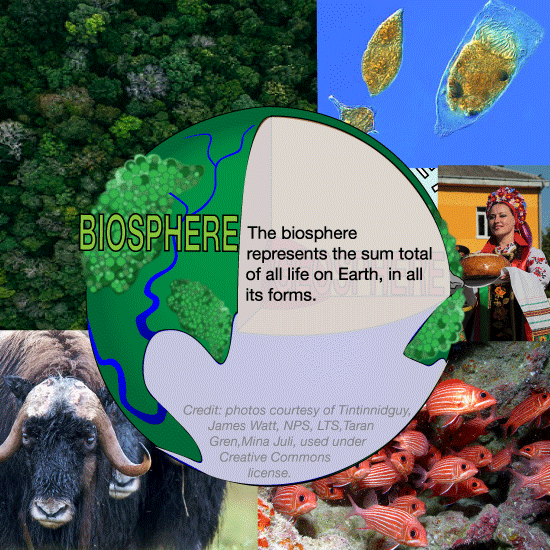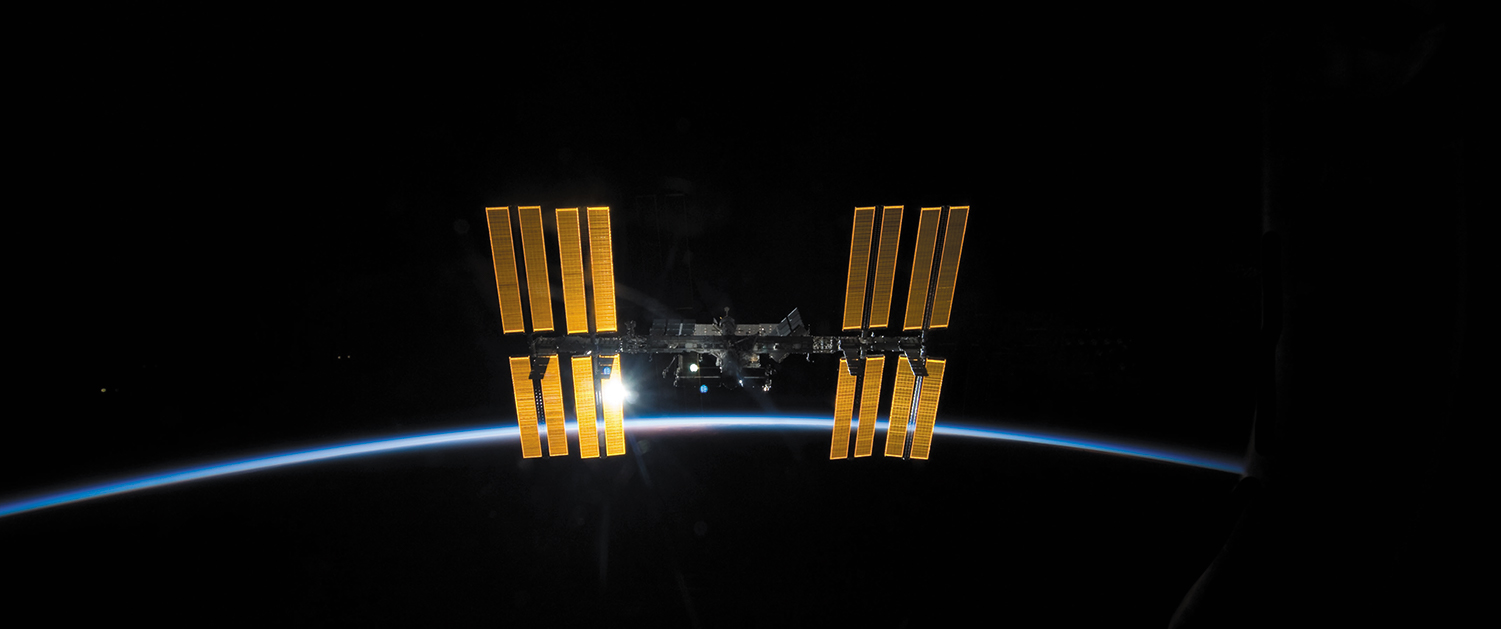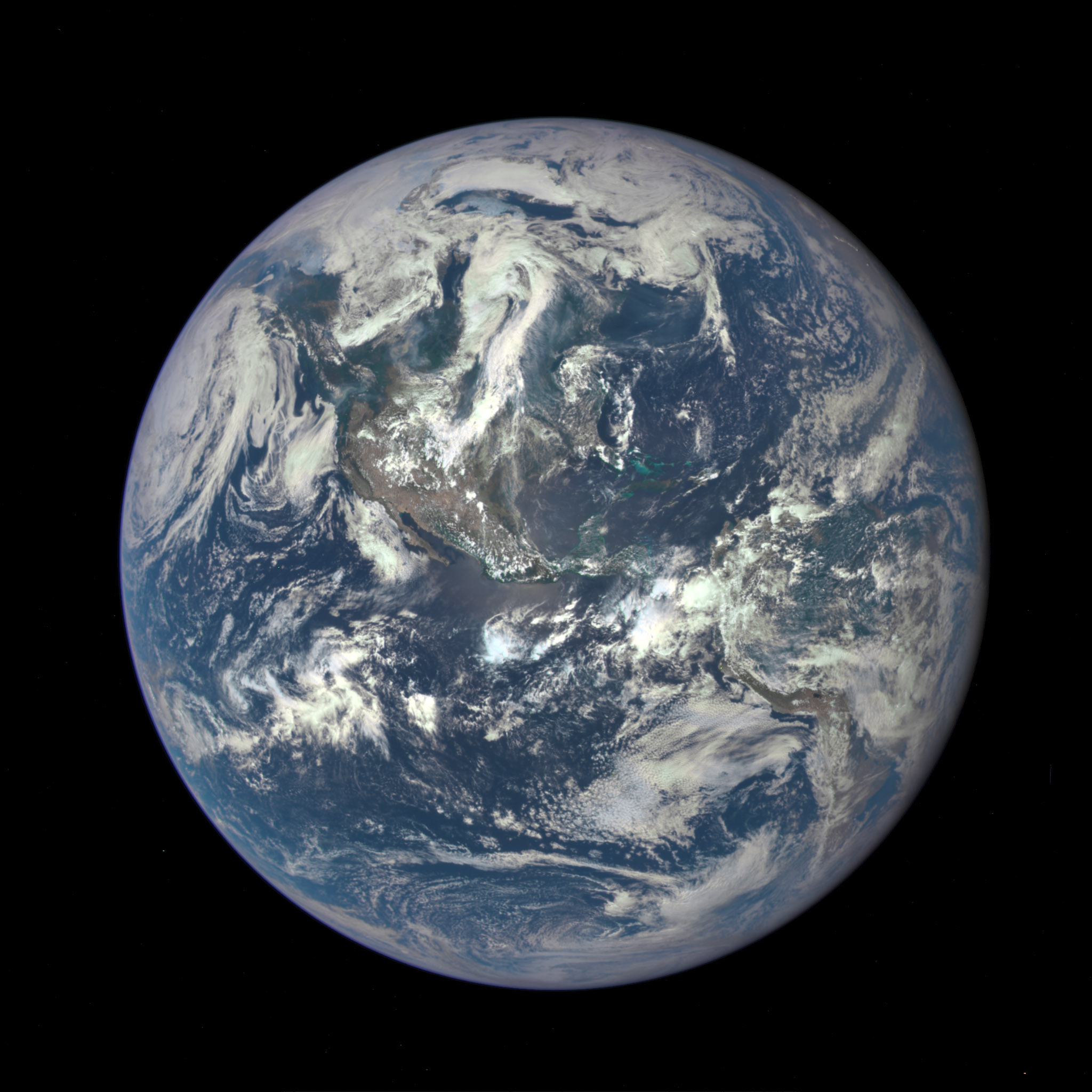Scientists generally think of Earth as a whole being made of the following four major systems, each called “spheres” because they are distributed over the nearly spherical shape of our planet:
- The geosphere represents everything that makes up the solid surface and interior of our planet, which means it includes the core, mantle, and crust of our planet.
- The hydrosphere represents all the water on Earth (hydro means “water”), no matter whether the water is liquid (as in oceans, lakes, and rivers), solid (as in snow and ice), or gas (as in water vapor in the atmosphere).
- The atmosphere is the thin layer of gas upon which we depend for breathing and for protection against dangerous radiation from space.
- The biosphere is the name we use to describe all life on Earth.
Figure 4.29 summarizes both the individual systems and how they work together in Earth system science. As is probably obvious, the individual systems and the full Earth system are all dynamic , meaning that they involve a lot of motion and change. Understanding these dynamics is one of the most important goals of Earth system science.
Key Concepts: Earth System Science
A system is made up of a group of interacting components, so that understanding the full system requires an understanding both of the individual components and of how the components interact. In Earth system science, we generally view the full Earth system as being made up of four major component systems: the geosphere, the hydrosphere, the atmosphere, and the biosphere. Both the full Earth system and the component system are dynamic, meaning they involve a lot of motion and change.
Slideshow 4.29 – Earth system science is the study both of Earth’s four “spheres” as
individual systems and of how these four systems work together to make our single
Earth system.
Discussion
The Systems of Spaceship Earth
Think again about the component systems that make up the full system of the International Space Station (or of any other spaceship on which humans might live). Can you think of systems that are analogous to Earth’s four systems of the geosphere, atmosphere, hydrosphere, and biosphere?
This discussion should be kept fairly short, as its purpose is only to help students understand the definitions of the four systems. It can be done either in small groups or as a class. Notes on the analogies that students will hopefully come up with:
- The geosphere is analogous to the spaceship structural components.
- The atmosphere is analogous to the spaceship systems that provide air to the astronauts. This includes the air recycling systems and might also be thought of as including the heating and cooling systems that keep the air at a comfortable temperature.
- The hydrosphere is analogous to the spaceship systems that provide and recycle water for the astronauts.
- The biosphere can be thought of as analogous to any life on the spaceship, including the astronauts themselves. Note, however, that for existing spacecraft (including the ISS), the “spacecraft biosphere” is not nearly as self-contained as that on Earth, since astronauts do not generally grow their own food (it is sent from Earth). However, future spacecraft built for longer journeys or for living on a place like the Moon or Mars will likely include gardens or other means for growing food, so the analogy might be stronger for such future spacecraft.
Note that these four major systems can themselves be separated into additional component systems. We’ll do some of that later in this book. For example, you’ll later learn how we can consider the atmosphere to be made up of components such as the “troposphere” and “stratosphere.” And, of course, there are many systems that you may learn about only after middle school. For example, if you later study oceanography, you might hear of the liquid oceans being considered separately from the solid ice of the cryosphere (which it gets its name from the Greek root cryos, meaning “cold”), which is usually defined to represent the polar ice caps, glaciers, snow, and any other frozen ground or water.
Activity
The Four Spheres
Work in groups of 3 to 5 students.
- Each group should make a set of four bins, with one each labeled for the geosphere, hydrosphere, atmosphere, and biosphere. You can make the bins with large sheets of paper or by drawing them on a board.
- Cut-up a set of smaller pieces of paper (or you could use sticky notes), and write each of the following terms/phrases on one piece of paper.
mid-ocean ridge
Amazon river
wind
humans
a volcanic eruption
an ocean trench
an islanda forest
a small creek
Mt. Everest
fish
the Atlantic ocean
pebbles in a stream
coalAntarctic ice sheet
the air we breathe
a mudslide
a glacier
an underground lake
a hurricane
a tornadoLake Superior
tigers
clouds
rainfall
insects
wheat grown for bread - For each of the terms/phrases, discuss as a group which bin you think it best belongs in. Then tape or stick it into that bin.
- After you’ve completed placing all the terms/phrases into the bins, compare your results to those of other groups. Do you all agree? Are there any terms that could have legitimately been placed into more than one bin?
This is designed to be a simple task in which students will sort terms/phrases according to whether they are phenomena of the geosphere, hydrosphere, atmosphere, or biosphere. The goal is to make sure students understand these terms clearly, since we will use them quite a bit.
- We’ve suggested relatively small groups, though you could alternatively do it as an individual or full class exercise.
- We’ve also suggested having students use pencil and paper to write to write the items they will be sorting. While this could be done in alternate ways (including on a computer), the writing should help them think about the meaning of the terms, and also should facilitate the comparisons among groups in Step 4.
- For Step 4, there are a few terms that might present some interesting discussion about which bin they belong in or that can legitimately be classified in more than one bin:
- Most students are likely to put clouds in the atmosphere, which is fine since that is where they reside. However, some students will know that clouds are actually made up of tiny droplets of water or flakes of ice, which means they can also be considered part of the hydrosphere.
- A hurricane is similar: it occurs in the atmosphere, but because it also includes a lot of rain, it could also be considered a phenomenon of the hydrosphere.
- A mudslide can go both in the geosphere and hydrosphere, since mud is a mix of rock (geosphere) and water (hydrosphere). You might also ask students to think about where they would put a tsunami, since it is water that does the damage, but a tsunami is usually generated by an earthquake or underwater landslide.
- Some items belong in only one bin but might still generate discussion. For example, “pebbles in a stream” are part of the geosphere since they are small rocks, despite being in a steam; fish are part of the biosphere despite being in the ocean, and coal is part of the geosphere despite being made from lifeforms that died long ago.
Connections—Etymology
Hydrosphere, Hydrogen, and Water
The Greek root hydro means “water,” a fact that you can see in many different words. For example, the hydrosphere is the “sphere” of water on Earth, hydrology is the study of water, and hydraulic devices use water to make them move. You might, therefore, wonder how hydrogen gets its name, given that it is an element found in many substances besides water; in fact, hydrogen is the most common chemical element in the universe, and only a very tiny fraction of all hydrogen is found within water molecules. So why does hydrogen seem to be named for water?
The answer goes back to how hydrogen was discovered. The first recognition that hydrogen is a distinct chemical element (but one that did not yet have a formal name) is attributed to a chemist named Henry Cavendish, who in 1766 discovered that burning hydrogen gas produced water. The name hydrogen was conferred in 1783 by another chemist, Antoine Lavoisier, who gave it this name by combining the Greek root hydro with another Greek root, gene, which means “creator.” In other words, “hydrogen” got its name because burning it creates water. Today we understand exactly why this occurs: Burning is a chemical reaction in which a substance is combined with oxygen, and the process of combining hydrogen and oxygen produces H2O, or water.
The Geosphere
We are now ready to briefly explore each of the four systems of Earth, which we’ll then study in greater detail in later chapters. Let’s start with the geosphere.
The geosphere essentially represents the entire Earth — both surface and interior — with the exception of its water, air, and life (Figure 4.30). Because the geosphere includes the entire core, mantle, and crust of our planet, it is by far the largest of Earth’s major systems. In fact, the geosphere represents about 99.98% of Earth’s total mass (with nearly all the rest being the water in the oceans).
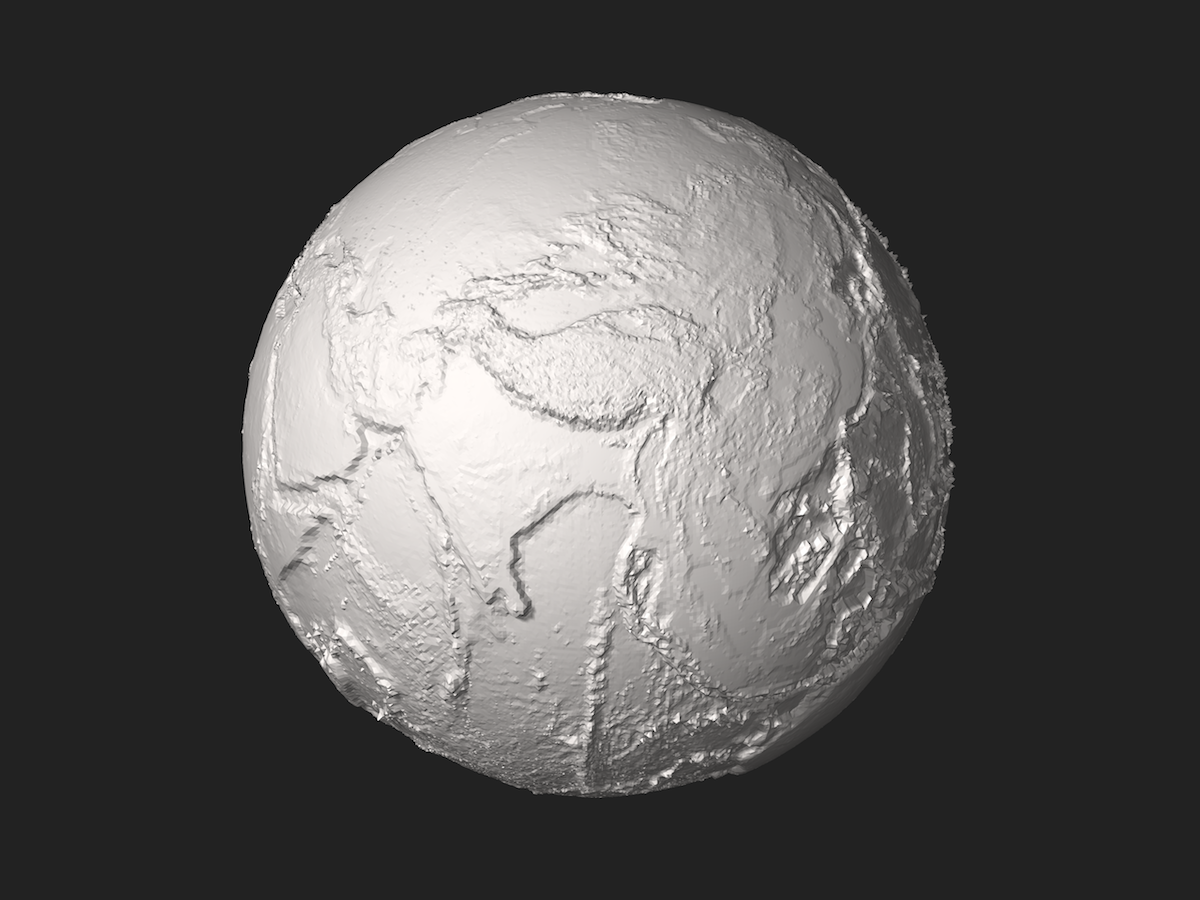
(b) Play the video to see what would happen as the oceans gradually drained. The flat map at the end shows our planet without oceans and with the seafloor colored brown. (Note: By itself, the geosphere would not have the colors shown on the land, since the green represents plant life and the white is ice.) Credit: NASA Scientific Visualization Studio.
Figure 4.30 – The geosphere represents everything that makes up the solid surface and interior of our planet, which means it includes the core, mantle, and crust of our planet. The two views shown here therefore represent the geosphere as it would appear from the outside.
Despite its large size and mass, we generally notice only the parts of the geosphere that influence our lives, which means the parts fairly close to the surface. As we’ve already discussed, these aspects of the geosphere change on many time scales, from the slow movements of the tectonic plates to the rapid changes that can accompany events such as earthquakes, volcanic eruptions, and landslides.
The Hydrosphere
The hydrosphere is far smaller in total size and mass than the geosphere. The largest of the three blue spheres in Figure 4.31 shows how the hydrosphere compares in size (volume) to the geosphere by imagining that all the water and ice on Earth could be made into a sphere of its own. The figure also shows that most of the water on Earth is the salt water of the oceans. The middle-size blue sphere shows that the fresh water that we can drink is only a small part (less than 1%) of Earth’s total water supply, and even most of that is found underground, where it is not easily accessible. The smallest sphere in Figure 4.31 represents fresh water in lakes and rivers, which is the water we can most easily access for drinking and irrigation.
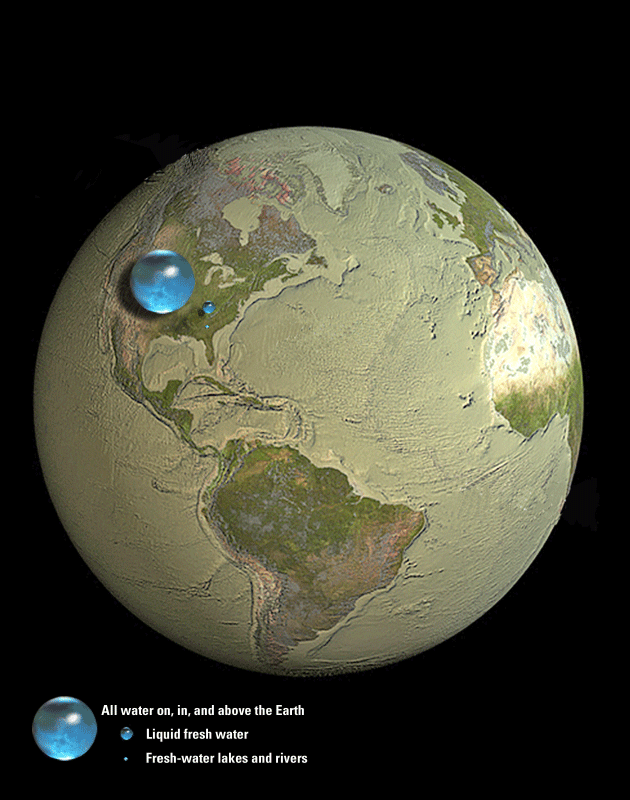
Despite its relatively small size, the hydrosphere is the most visible part of our planet. After all, we call Earth “the blue planet” because of the blue color of the oceans as seen from space (Figure 4.32). The polar ice caps (which are also part of the hydrosphere) are also easy to see from space, though they are of course white in color.
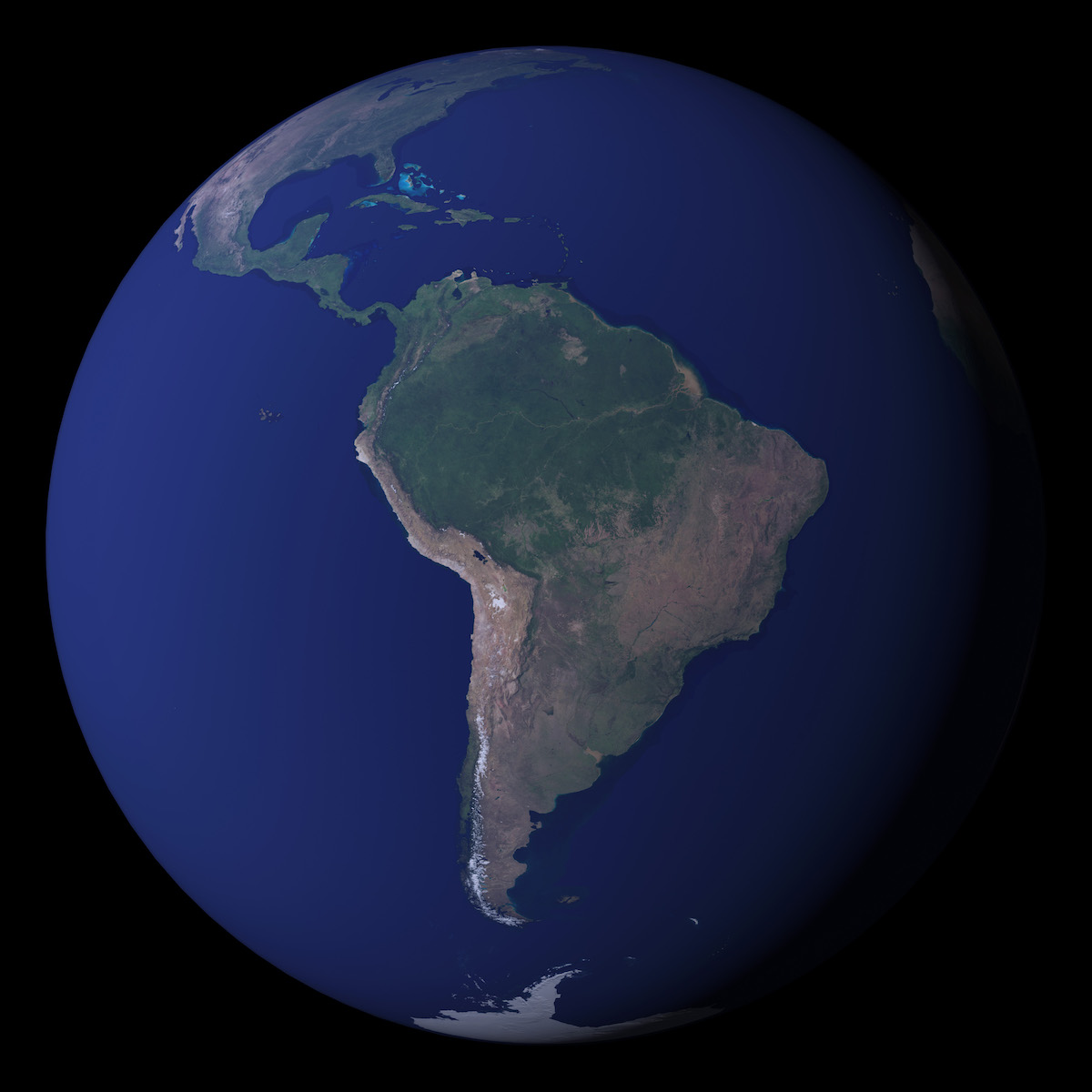
The hydrosphere is generally much more dynamic on short time scales than the geosphere, meaning that changes in the hydrosphere tend to occur much more quickly than changes in the geosphere. To help you think about some of the dynamics of the hydrosphere, try the following discussion.
Discussion
Dynamics of the Hydrosphere
Discuss the following questions in small groups or as a class.
- Name at least three ways in which ocean water moves.
- What parts of the hydrosphere do you think move or change at the slowest rate? Be sure to consider all aspects of the hydrosphere, including liquid water, ice, and water vapor.
- How does water leave the oceans?
- How does water return to the oceans?
This discussion will help ensure that students are prepared for the more detailed discussion of the hydrosphere that we’ll do in Chapter 6. Here, the goal is for them to work together to try to come up with reasonable answers to the questions, which should help ensure they all have a baseline knowledge. Sample answers:
- (1) Three ways in which ocean water moves are through currents that travel long distances across the ocean or vertically between the surface and deeper ocean, waves that lap upon the shore, and the daily rise and fall of the tides.
- (2) Generally speaking, ice caps and glaciers are the slowest moving/changing parts of the hydrosphere. However, some deep aquifers also change quite slowly, and there is also some deep ocean water that is fairly stable.
- (3) Water leaves the oceans almost entirely through evaporation.
- (4) Water returns to the oceans primarily through precipitation (rainfall or snowfall) and by flowing in from streams and rivers. Some also flows in from underground sources and from glacial melting.
These dynamics have a huge influence on our lives, sometimes in surprising ways. For example, the current called the Gulf Stream (Figure 4.33) carries warm water from the Gulf of Mexico toward northwestern Europe, and this is a major part of the reason why countries in that region have much warmer climates than regions of eastern Canada that are equally far north.
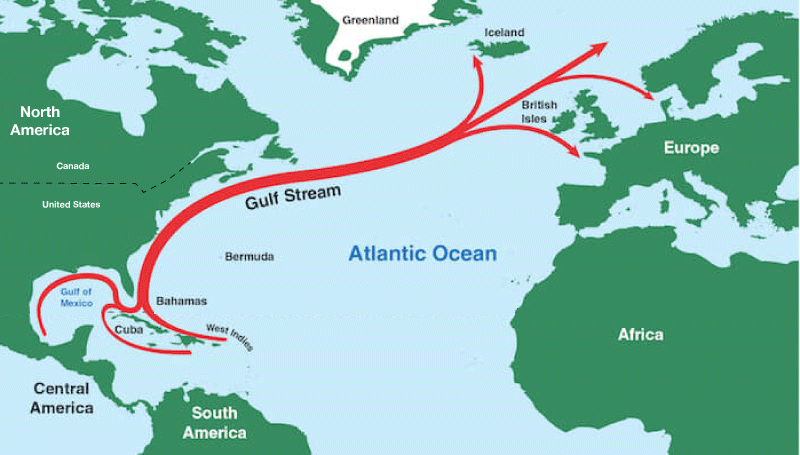
Claim-Evidence-Reasoning Activity
The Gulf Stream
Study Figure 4.33 and use evidence and reasoning to support or refute the following claim.
Claim: Besides warming northern Europe, the Gulf Stream also keeps the northeastern United States warmer than it would be otherwise, and Florida cooler than it would be otherwise.
This CER activity is designed to have students think about the implications of what Figure 4.33 shows for the Gulf Stream. They should recognize the claim is true because:
- The map shows that the Gulf Stream first passes by the northeastern United States before heading toward northwestern Europe. Therefore, because the Gulf Stream is carrying warm water, it makes both the northeastern U.S. and northwestern Europe warmer than they would be otherwise (especially in winter).
- In terms of Florida, the Gulf Stream is carrying warmth away. Because the total heat/energy must be conserved, this means Florida is cooled by the Gulf Stream compared to what it would be otherwise.
The Atmosphere
Have you wondered why astronauts need spacesuits on the Moon (Figure 4.34)? There are actually many reasons. For example:
- There is no air and therefore no oxygen for astronauts to breathe on the Moon, so they must bring oxygen with them in their spacesuits.
- The Sun emits dangerous ultraviolet and x-ray radiation, and the lack of air means no protection against this radiation on the Moon. Spacesuits provide this protection.
- The lack of air to circulate heat also means that the temperature on the Moon varies greatly. Ground that is in sunlight can be hotter than the boiling point of water, while ground that is in shadow can be colder than the coldest night in Antarctica. Spacesuits must provide a stable temperature for the astronauts wearing them.
- Human bodies are adapted to the air pressure that surrounds us on Earth, and we would die in just minutes in the airless vacuum of the Moon or space. Spacesuits maintain the pressure that our bodies need.
- Spacesuits contain radios that make communication between astronauts possible. Without these radios, astronauts could not hear each other, because sound cannot travel through the vacuum of space.
Notice that all these reasons why astronauts need spacesuits involve air. In other words, the reason we don’t need spacesuits on Earth is because of the air in our atmosphere.
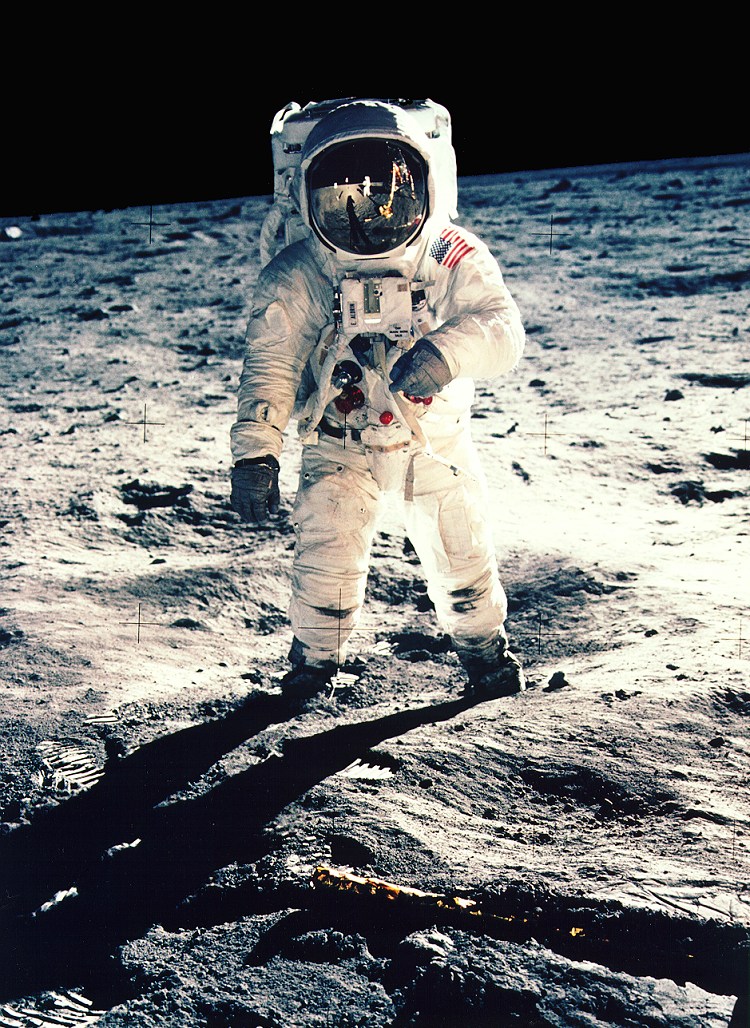
Of course, the atmosphere does more than just keep us alive. The atmosphere is in constant motion, creating the wind and weather that we experience every day. The atmosphere also plays a crucial role in regulating Earth’s temperature, because it creates something called the greenhouse effect , which we’ll study in detail in Chapter 7. As you’ll see, without this greenhouse effect, Earth would be too cold to have liquid water oceans. In addition, the air pressure created by the atmosphere makes it possible for Earth to have liquid water and oceans: Without this air pressure, all the water in the oceans would either freeze or boil away (which is what would happen to liquid water outside on the Moon or Mars).
The atmosphere plays all these important roles despite being remarkably thin compared to Earth’s size. You can see how thin it is by looking back at some of our earlier photos. For example, Figure 4.28 shows how the atmosphere forms what is sometimes called a “thin blue line” above our planet.
Nevertheless, the atmosphere goes higher than the oceans are deep, so in that sense the atmosphere is “larger” than the hydrosphere. However, the total mass of the atmosphere is only about 1/300 that of the hydrosphere, so by mass it is the smallest of the three spheres we’ve discussed so far.
Discussion
Earth’s “Thin Blue Line”
Discuss the following questions in small groups or as a class.
- Look again at Figure 4.28, which was taken from the Space Shuttle Discovery as it left the International Space Station (ISS). Briefly discuss where the shuttle and the ISS were located relative to Earth’s day side or night side when the photo was taken.
- Another way to recognize the thinness of Earth’s atmosphere compared to its size is to look at a photo of our full planet from space, such as the photo in Figure 4.1. Briefly explain how you can tell from this photo that the atmosphere is very thin.
- What key difference between Earth and the Moon do you think explains why Earth has an atmosphere and the Moon does not?
This brief discussion should reinforce some ideas that students should in principle already know and that (at least for questions 2 and 3) will help them be prepared for the more detailed discussion of the atmosphere that we’ll undertake later.
- (1) The fact that Figure 4.28 shows the circular shape of Earth in black means the photo was taken above Earth’s night side. However, the fact that we see the ISS illuminated by sunlight means the shuttle must have been very close to the dividing line with the day side when the photo was taken, so that the ISS was in sunlight while the shuttle was still in darkness.
- (2) Photos of the full Earth from space (such as Figure 4.1 or the iconic full Earth photo from the Apollo 17 mission) always show Earth seeming to have a sharp edge. This tells us that the atmosphere must be very thin compared to Earth’s size, because otherwise the atmosphere would give Earth a much fuzzier-looking edge. You can also see this idea on the visible disk of the Earth itself, where if you didn’t know better, you might think the clouds were painted onto the surface, again showing that they are quite close to the surface in comparison to the size of the Earth.
- (3) The key difference is gravity. Students should remember from Chapter 3 that the strength of a world’s gravity depends on its size (more technically on the combination of size and mass, but for rocky worlds like Earth and the Moon we get the same answer by simply thinking in terms of size). Earth’s larger size gives it stronger gravity than the Moon, and this gravity is what keeps our atmosphere from escaping to space. The Moon’s much weaker gravity allowed any air it once had to escape long ago. (Fyi, the Moon almost certainly had at least some gas released from its interior during its early history, but this gas has long since been lost to space.) Note: We’ll discuss these ideas further in Section 4.3.2 in the context of comparative atmospheres among the rocky worlds of our solar system.
The Biosphere
The biosphere is by far the smallest of our four spheres. Scientists don’t know exactly how much life there is on Earth, in part because we don’t know how deep life can be found underground, but most estimates indicate that the total mass of the biosphere is less than 1/1000 that of the atmosphere.
Nevertheless, the biosphere is at least equally important to us as any of the other systems. After all, we are part of the biosphere ourselves, and all our food also comes from the biosphere (Figure 4.35).
The biosphere is arguably the most dynamic of the four systems. Much of the action in the biosphere occurs at a cellular level, where metabolic processes can unfold in a fraction of a second. Motion and change also occur on many other time scales in the biosphere. For example, seasonal changes in vegetation, vast animal migrations, and the slow growth of a tree are all phenomena of the biosphere.

Activity
How We Depend on Earth, Part 2
At the beginning of this chapter, you did an activity called “How We Depend on Earth” for which you ended up with a class list of ways that we depend on our planet.
- As you did for the activity “Earth’s Four Spheres” in this section, make a set of four bins for the geosphere, hydrosphere, atmosphere, and biosphere.
- Working in small groups, write down all the items from the earlier class list of ways that we depend on our planet, then put each one into the bin that you think best represents the “sphere” that is responsible for that item. (For example, if your list included “we need air to breathe,” you would sort it into the “atmosphere” bin.)
- Briefly discuss your results. For example: Which of the four spheres got the most items? Do you think that makes this sphere more important than the others? Did you find any items that could be sorted into more than one sphere?
This activity builds on two earlier activities. The goal is to help students think about how the earlier list of ways in which we depend on Earth might be separated into the four major systems of Earth. Notes:
- (1) This part should be easy, just asking students to again create the four bins.
- (2) Recall that in the activity “How We Depend on Earth,” students first worked in small groups and then you (as teacher) helped create a consolidated class list. This is the list that students should work from here. Note: if you want to make things easier for students, rather than having them write the items down on individual small pieces of paper, you could type up the list and then make a printout for each group, which the students could then cut up to tape into the bins.
- (3) Answers will obviously vary depending on your particular class list of items, and there will likely be items that could arguably be sorted into more than one bin. For example, anything having to do with food would clearly belong in the biosphere bin, but as we’ll discuss in the next subsection, it could also belong in the other bins since air, water, and soil are all necessary to growing food. Students will hopefully recognize that all four spheres are important to us, even if one sphere ended up with substantially more items in it than the others.
The Earth System
We have briefly explored the four major systems individually, but remember that these systems are all interrelated within the full Earth system. Indeed, for most of the things that we depend on, we can find roles played by all four systems. As a simple example, consider eating an apple.
Discuss the following questions with a classmate. Then click to open the answers to see if they agree with what you came up with.
- Which of the four major systems does an apple belong to?
An apple is made from living cells, so it is part of the biosphere.
- Describe at least two connections between the apple and the geosphere.
You may think of others, but here are two important ones: (1) The apple grew on a tree that was rooted in the ground, and the ground is part of the geosphere. (2) The apple contains mineral nutrients that the tree roots absorbed from the soil, and these minerals came from broken down rocks, which also are part of the geosphere.
- How was the growth of the apple dependent on the hydrosphere?
A tree needs water to grow and produce fruit, and this water is part of the hydrosphere.
- How was the growth of the apple dependent on the atmosphere?
Like all plants, a tree needs air, which makes up the atmosphere, to live. More specifically, the tree absorbs carbon dioxide from the atmosphere and returns oxygen.
Figure 4.36 summarizes the relationships you should have found for the apple.
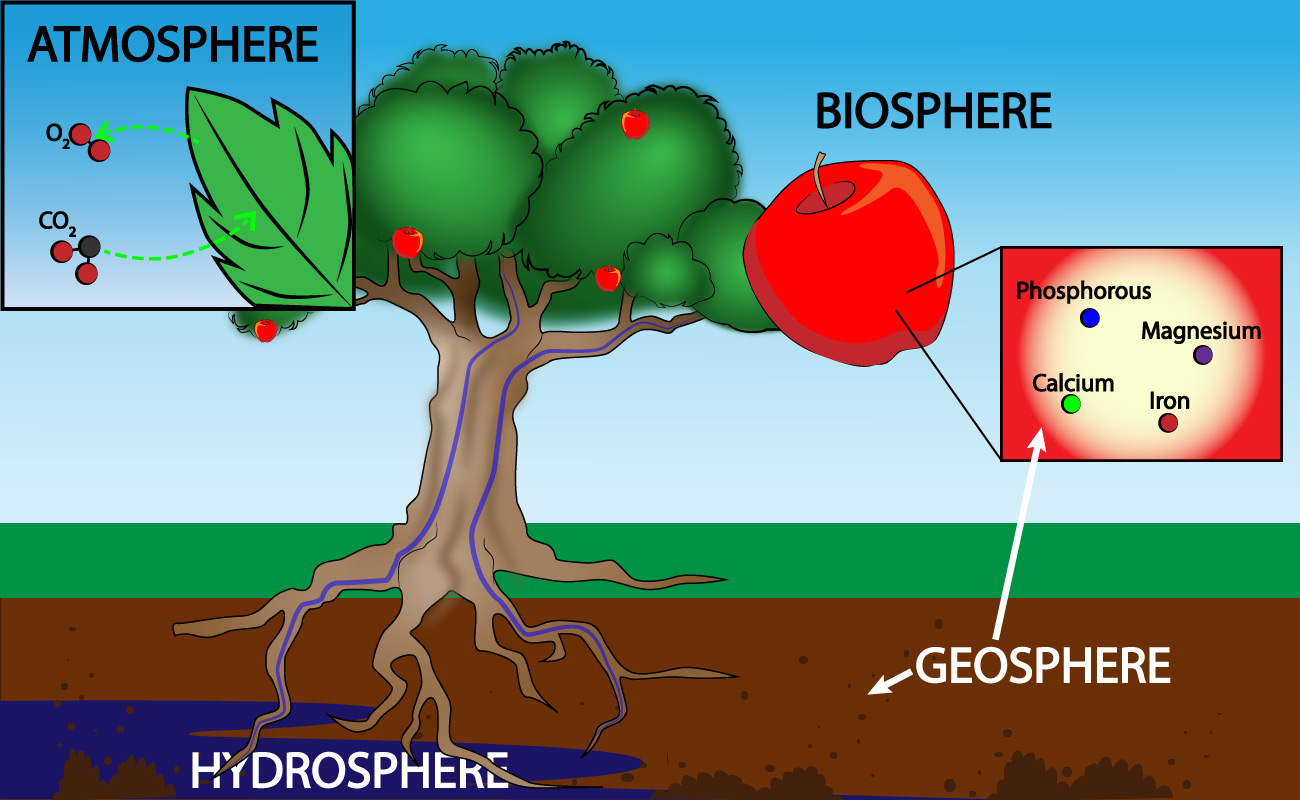
The main value of the “four systems” approach is that it simplifies the process of modeling different aspects of the overall Earth system. Trying to understand a complex system like Earth is much more difficult than trying to understand how planets move or how gravity works (to name two examples of models you’ve studied previously). In essence, thinking in terms of the four systems allows us to break the complex puzzle of the full Earth system into smaller pieces that we can study more easily, though we must always remember that the systems have interactions both within them and between them.
Key Concepts: Modeling the Earth
Like any scientific model, a model of an Earth system seeks to explain and predict observable phenomena. Because Earth is so complex, we can generally attempt to model only one aspect of Earth system at a time. For example, we might make a model of how the geosphere undergoes long-term change that rearranges continents, or a model of the climate that seeks to understand and predict the effects of global warming.
